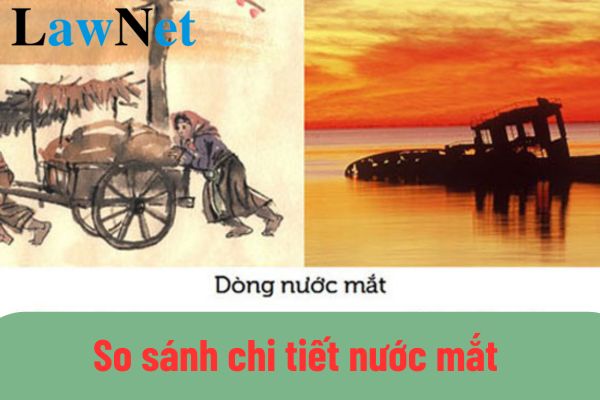Vietnam: What are the guidelines for comparison of the imagery of tears in "Vợ nhặt" and "Chiếc thuyền ngoài xa"? What are the orientations in educational methods for the 12th-grade Literature curriculum?
What are the guidelines for comparison of the imagery of tears in "Vợ nhặt" and "Chiếc thuyền ngoài xa"?
The imagery of tears in the two works "Vợ nhặt" by Kim Lan and "Chiếc thuyền ngoài xa" by Nguyen Minh Chau both hold profound meanings, reflecting the content, themes, and emotions of the characters in each work.
The comparison of the imagery of tears in "Vợ nhặt" and "Chiếc thuyền ngoài xa" is studied and practiced in the 12th-grade Literature curriculum.
|
What are the guidelines for comparison of the imagery of tears in "Vợ nhặt" and "Chiếc thuyền ngoài xa"?
1. Tears in "Vợ nhặt" by Kim Lan |
*Note: The above guidelines for comparison of the imagery of tears in "Vợ nhặt" and "Chiếc thuyền ngoài xa"are for reference only./.

What are the guidelines for comparison of the imagery of tears in "Vợ nhặt" and "Chiếc thuyền ngoài xa"? What are the orientations in educational methods for the 12th-grade Literature curriculum in Vietnam? (Image from the Internet)
What are the two main types of texts in Vietnamese knowledge content of the 12th-grade Literature curriculum in Vietnam?
Under Section 6, Appendix of the General education program in Literature issued with Circular 32/2018/TT-BGDDT, there are two main types of texts in Vietnamese knowledge content of the 12th-grade Literature curriculum in Vietnam as follows:
- Argumentative text: the role of points, arguments, and evidence; the purpose, emotions, and viewpoints of the writer; methods to enhance affirmative and negative aspects in Argumentative texts; argumentation and expressive language; speeches in launching a movement or a social activity; argumentative essays on issues related to the youth; comparative argumentative essays evaluating two literary works of the same or different genre
- Informational text: the value of topics, the main information of the text; types of data and the reliability of data; work exchange letters; reports on project exercises or research results on a natural or social issue
What are the orientations in educational methods for the 12th-grade Literature curriculum in Vietnam?
Under Section 6 in the Appendix to the General Education Program in Literature issued with Circular 32/2018/TT-BGDDT, the orientations in educational methods for the 12th-grade Literature curriculum in Vietnam are as follows:
The Literature curriculum utilizes education methods oriented toward integrated and differentiated teaching; diversifying educational methods, means, and organizational forms; promoting active, proactive, and creative learning, applying knowledge and skills of students.
- Based on the program, teachers proactively and flexibly build and organize lessons according to the following orientations:
+ Implement intra-disciplinary integration requirements (both knowledge and skills), interdisciplinary integration, and integrate priority education content (cross-disciplinary); implement differentiated teaching according to student subjects at all levels and differentiation contributing to career orientation in high school education.
+ Train students in methods of reading, writing, speaking, and listening; practice, experience in receiving and applying knowledge of the Vietnamese language and literature through learning activities in and out of the classroom; focus on using teaching means, overcoming the traditional reading and copying teaching style, developing thinking, training skillful use of means for students.
+ Enhance and promote student activeness and self-reliance; allocate ample time for students to study textbooks and learning materials, practice, conduct presentations, discussions, and defend learning results to enable students to read, write, speak, and listen according to varying demands and levels; assess and evaluate student task fulfillment in their learning tasks.

